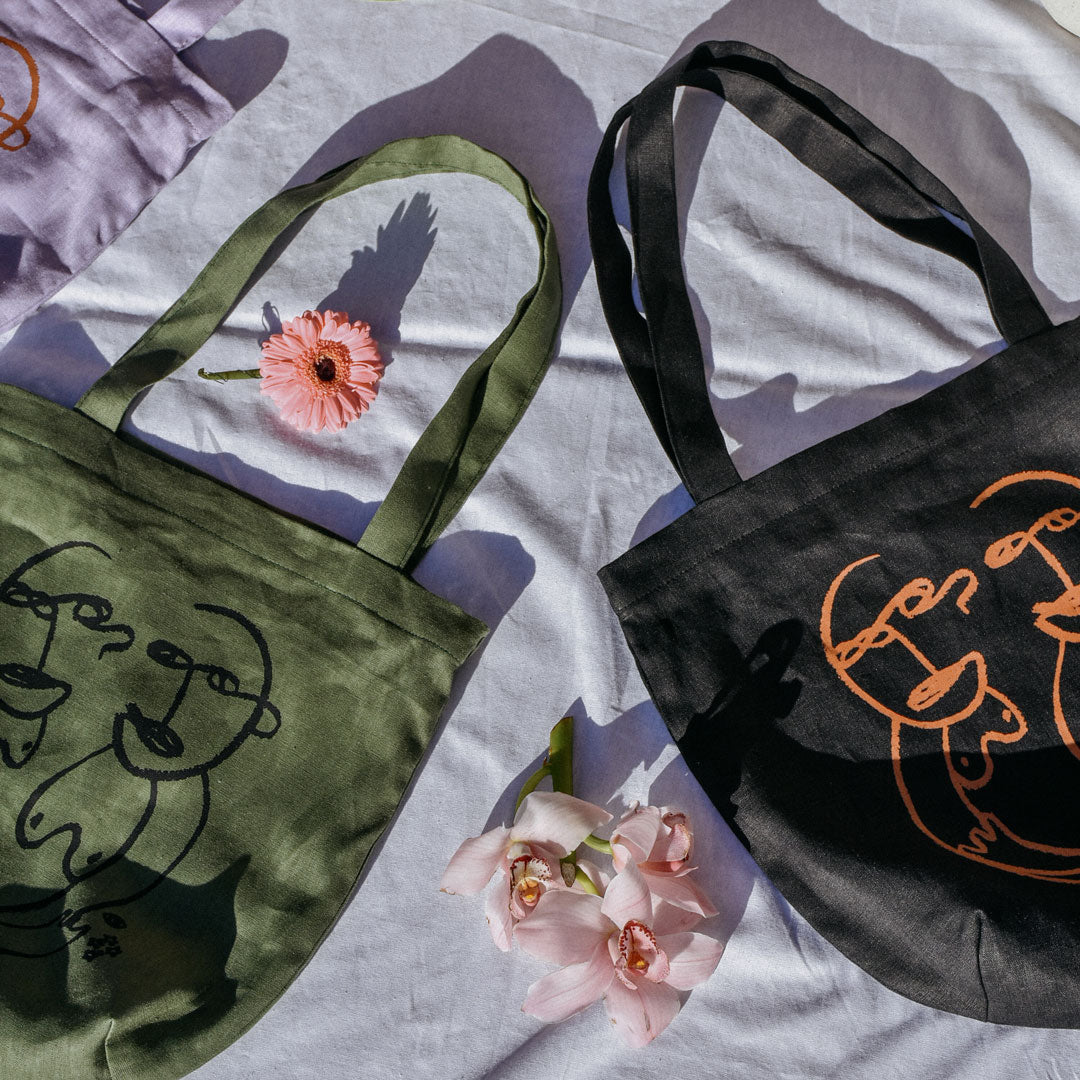how we make the Universal Tote Pack
Today, we are sharing with you the craftsmanship and process that goes into each of our made-to-order Universal Tote Packs, which take over 17 hours to make in our Brunswick Atelier. By making each of these totes through a made-to-order model, each piece receives the love and attention it truly deserves.
preparation
To begin the process, all of the vegetable dyed, Kangaroo leather panels and straps are cut along with the recycled hemp / organic cotton lining and portuguese cork, which is used as a plastic free alternative to give the bag shape and structure.
 all panels are cut and laid out on the bench ready to begin assembly.
all panels are cut and laid out on the bench ready to begin assembly.
 main bag panels are skived at the leather's edge to reduce the leather thickness where seams are going to be made.
main bag panels are skived at the leather's edge to reduce the leather thickness where seams are going to be made.
 all the straps, tabs, and keepers prepared at the very start of the bag making process.
all the straps, tabs, and keepers prepared at the very start of the bag making process.
Our simétrie logos are stamped on the front and inside panels of the bag. Next, the necessary leather panels are skived, paring back the edges of most seams to eliminate bulk, as it awaits assembly.

our Kingsley embossing machine ready to stamp the interior logos.
 our interior and exterior logos embossed in black foil
our interior and exterior logos embossed in black foil
Stitching
Most of the Universal Tote Pack is machine stitched using a poly/cotton thread that consists of 50% polyester at its core to provide strength and longevity to the bag. The outer natural cotton sheath is moisture absorbent, so if it comes in contact with water, it doesn’t threaten the integrity of the seams.
The signature simétrie saddle stitching exists in a few areas and is stitched by hand using beeswax coated linen thread. The ‘leather eyelet’ details where the straps feed through are saddle stitched so that these areas are properly reinforced.
The areas around our signature o-ring detail are also finished with a saddle stitch as the machine cannot reach this intricate area.
 here the front panel has been machine stitched to a point just before the o-ring. we leave a long thread and saddle stitch the remaining part of the seam as the machine cannot reach around the metal o-ring.
here the front panel has been machine stitched to a point just before the o-ring. we leave a long thread and saddle stitch the remaining part of the seam as the machine cannot reach around the metal o-ring.
 a close up of the saddle stitched "leather eyelet" detail. the straps will pass through these holes and carry the weight of the contents of the bag, so these need to be super strong.
a close up of the saddle stitched "leather eyelet" detail. the straps will pass through these holes and carry the weight of the contents of the bag, so these need to be super strong.
assembly
The bag panels consist of vegetable tanned Kangaroo leather, reinforced with portuguese cork, and are lined with a hemp / organic cotton canvas. Each panel is constructed separately to make up the front panel, the back panel, the side panels and the base panel. The interior panels, the hemp canvas canvas along with the pockets, are constructed separately to the exterior.
Each step requires the panels to be held together with glue, stitched with a machine and finished by hand, which is highly manual in nature and requires the utmost skill and attention to detail. At simétrie we use a water based glue, which is safe for the environment in the case of potential run-off and for our craftswomen to use compared with solvent based alternatives.
 the interior lining panels [left] are assembled with leather frames. the exterior panels [right] are ready to be glued to their linings.
the interior lining panels [left] are assembled with leather frames. the exterior panels [right] are ready to be glued to their linings.
 here the front [left] and the back [right] exterior panels are awaiting the o-ring detail, then the cork can be glued onto the backside, and the lining can be attached.
here the front [left] and the back [right] exterior panels are awaiting the o-ring detail, then the cork can be glued onto the backside, and the lining can be attached.
 here the side panels are attached to the base panel and is ready to glue onto the front panel.
here the side panels are attached to the base panel and is ready to glue onto the front panel.
In this part of the process, the structure of the Universal Tote Pack comes to life as the base is attached to the side panels, and the main body panels are completed with their linings, pockets and zips. The straps are also produced simultaneously so they are ready to be fixed to the bag at the very end. It takes 15 hours of precision craftswomanship just to arrive at this point.
the finishing touches
All of the bag and strap edges are burnished at the end to seal the edges and provide protection from the weather and general abrasion. The edges are prepared for burnishing by sanding and beveling the edges first, so they are smooth and rounded.
Then, the carefully curated hardware is attached - the top handle o-rings, the circular clasps and mushroom studs that adjust the strap length.

Finally the straps are attached and the bag is ready to go to its loving owner.

If this article has sparked your curiosity for the Universal Tote Pack, you can find out more and order one of your own here.



Comments